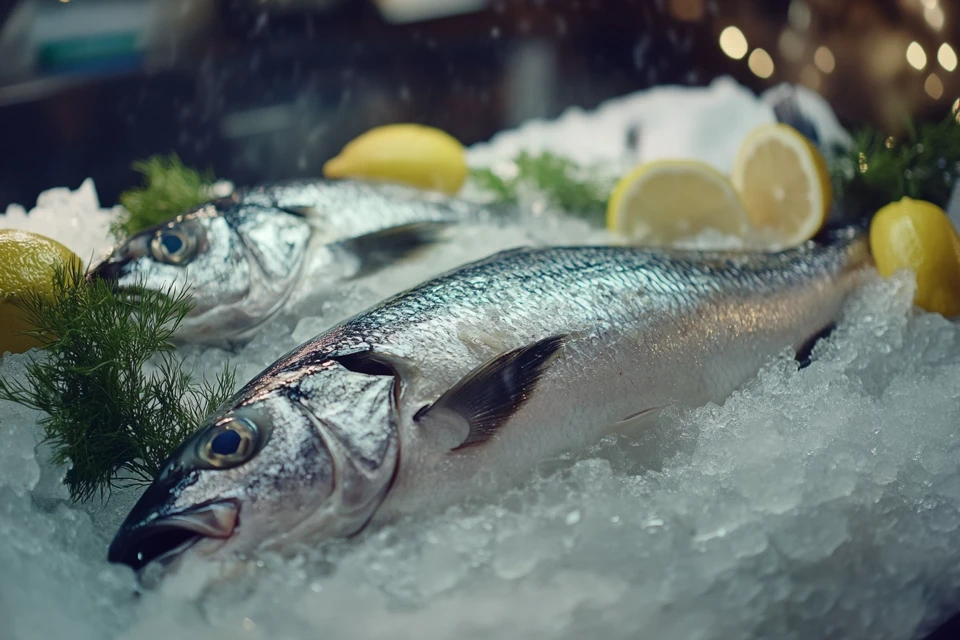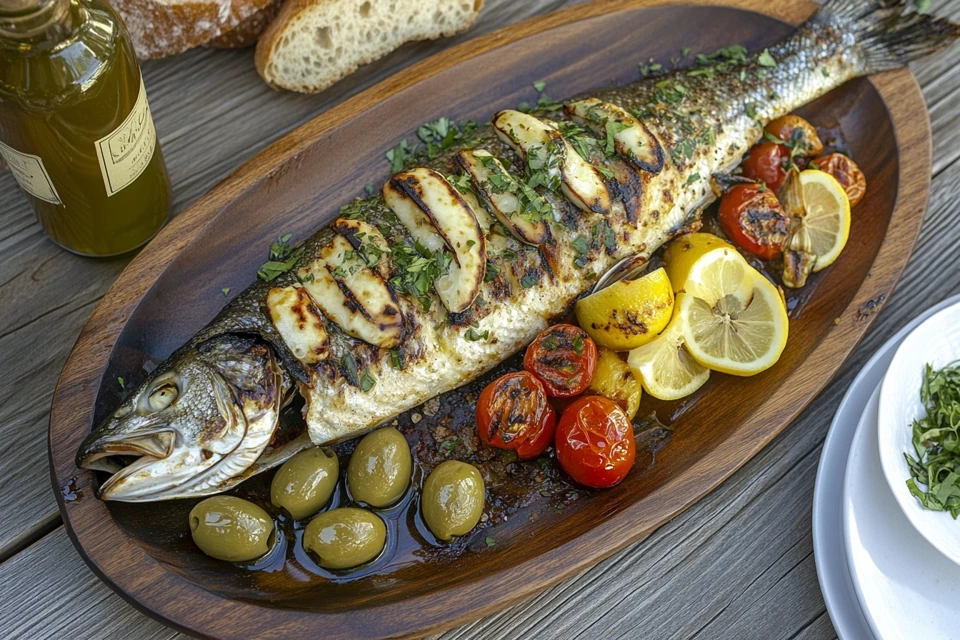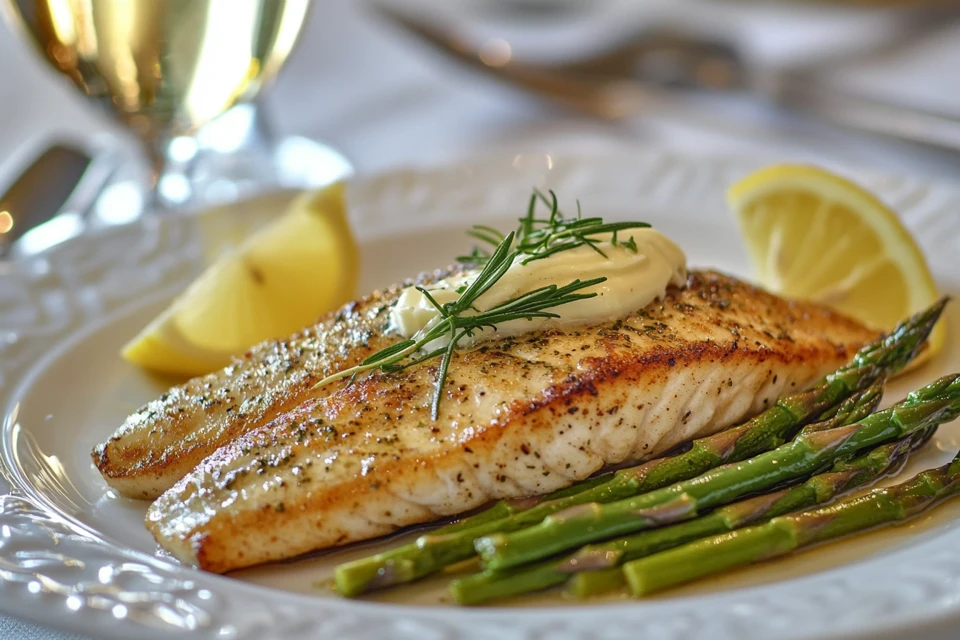1. Introduction
Branzino is a fish that has gained immense popularity in Mediterranean cuisine and fine dining establishments around the world. Known for its delicate flavor and versatility in cooking, branzino has become a favorite for chefs and home cooks alike. But what kind of fish is branzino, and why has it captured the culinary spotlight?
In this article, we will dive deep into the world of branzino, exploring its origins, characteristics, and culinary appeal. From understanding its habitat to mastering the art of cooking it, you’ll gain all the knowledge you need to appreciate this prized fish fully.
2. Branzino: What Kind of Fish is It?
Branzino, also known as European sea bass, is a white-fleshed fish that has become a culinary staple in Mediterranean countries and beyond. Its delicate flavor, firm texture, and versatility make it a standout choice for a wide variety of dishes.
2.1 What Kind of Fish is Branzino and Why is It Unique?
Branzino belongs to the sea bass family, scientifically classified as Dicentrarchus labrax. It is a saltwater fish that thrives in coastal waters, estuaries, and lagoons. With its mild flavor and ability to absorb seasonings, branzino is often described as the perfect blank canvas for culinary creativity.
Key Characteristics:
- Mild, sweet taste.
- Firm yet flaky texture.
- Adapts well to various cooking methods, such as grilling, baking, and steaming.
2.2 Where Can You Find Branzino in Its Natural Habitat?
Branzino is native to the Mediterranean Sea and the northeastern Atlantic Ocean, stretching from Norway to Senegal. It is a migratory species that moves to shallow waters during warmer months and retreats to deeper areas in colder seasons.
Global Presence:
- Branzino is cultivated extensively in fish farms across Europe, particularly in Greece, Turkey, and Italy.
- In recent years, its popularity has spread to the United States and Asia, where it is often imported or locally farmed.
2.3 What Does Branzino Fish Look Like?

Physically, branzino is striking with its elongated body, silver scales, and sleek profile.
Features of Branzino:
- Size and Weight: Wild branzino typically measures 1-3 feet in length and weighs between 1 and 4 pounds. Farmed branzino is usually smaller but still flavorful.
- Coloration: Its shiny silver body contrasts with darker shades on the dorsal fin and lighter underbellies.
This combination of visual appeal and manageable size makes branzino an attractive choice for both restaurants and home kitchens.
3. Culinary Appeal of Branzino: What Kind of Fish is Loved Worldwide?
What kind of fish is branzino? Beyond its physical characteristics, it is a culinary treasure appreciated for its versatility and mild, crowd-pleasing flavor. Here’s why branzino has become a go-to choice for seafood enthusiasts worldwide.
3.1 Why is Branzino a Star in Mediterranean Cuisine?
Branzino’s roots in Mediterranean cooking have made it a staple in this region’s rich culinary heritage. Explore other versatile recipes like our Sinigang Recipe to expand your culinary repertoire.
Reasons for Its Popularity:
- Mild Flavor: Branzino offers a slightly sweet taste that complements bold Mediterranean ingredients like olives, capers, and tomatoes.
- Firm Texture: Its firm, flaky texture holds up well during cooking, making it ideal for grilling, roasting, or steaming.
- Adaptability: Branzino’s neutral taste allows it to pair effortlessly with a variety of spices, herbs, and sauces.
In Mediterranean households, branzino is often grilled whole with olive oil, garlic, and fresh herbs, creating a dish that’s simple yet packed with flavor.
3.2 Branzino vs. Other Sea Bass: What Kind of Fish is Better for Your Dish?
Although branzino belongs to the sea bass family, it has distinct qualities that set it apart from its relatives, such as Chilean sea bass or black sea bass.
Key Differences:
- Flavor: Branzino is milder compared to the rich, buttery flavor of Chilean sea bass.
- Texture: While both are firm, branzino’s flaky texture makes it lighter and more delicate.
- Price: Branzino is generally more affordable, making it accessible for everyday cooking and special occasions.
By understanding these differences, it’s easy to see why branzino has carved out its niche in seafood cuisine.
3.3 Nutritional Benefits: Is Branzino a Healthy Fish to Eat?
One of the reasons branzino is so sought after is its impressive nutritional profile.
Health Benefits of Branzino:
- High in Omega-3 Fatty Acids: These essential fats promote heart health and reduce inflammation.
- Rich in Protein: A single serving of branzino provides a substantial amount of lean protein, ideal for muscle repair and growth.
- Low Mercury Levels: Unlike larger fish such as tuna, branzino has relatively low mercury levels, making it a safer choice for frequent consumption.
In addition to its health benefits, branzino’s light flavor and nutritional value make it an excellent option for those following a balanced diet.
4. Cooking Branzino: What Kind of Fish is Best for Versatile Recipes?
If you’ve ever wondered what kind of fish is branzino in the kitchen, it’s one of the most versatile seafood options available. Whether grilled, baked, or steamed, branzino’s mild flavor and firm texture make it a perfect choice for a wide range of dishes. Here’s how to prepare it like a pro.
4.1 Traditional Mediterranean Preparations for Branzino: What Kind of Fish Works Best?

Branzino has long been a centerpiece in Mediterranean cuisine, where simple ingredients highlight the fish’s natural flavor. For step-by-step recipes, visit our Branzino Recipe Guide.
Popular Mediterranean Dishes:
- Grilled Whole Branzino: This classic dish features branzino seasoned with olive oil, salt, and lemon, then grilled over an open flame. The charred skin and tender flesh make it a standout choice.
- Oven-Baked Branzino: Often prepared with a mix of Mediterranean vegetables like zucchini, tomatoes, and bell peppers, this method infuses the fish with vibrant flavors.
Mediterranean preparations emphasize freshness, making branzino a versatile addition to any seafood menu.
4.2 Popular Recipes for Branzino Across the Globe

While Mediterranean-style cooking is the most traditional approach, chefs worldwide have adapted branzino to suit diverse cuisines.
International Recipes:
- Asian-Inspired Steamed Branzino: Prepared with soy sauce, ginger, garlic, and scallions, this dish brings a light, savory flavor that complements the fish’s mild taste.
- Pan-Seared Branzino: In the United States, branzino is often pan-seared with garlic butter, creating a crispy skin and a rich, aromatic flavor.
- Italian Branzino al Sale: A salt-crusted whole branzino baked to perfection, keeping the fish moist and flavorful.
These global recipes demonstrate branzino’s adaptability, making it an exciting ingredient for home cooks and professionals alike.
4.3 Best Practices for Cooking Branzino
To get the most out of branzino, follow these tips to ensure it’s cooked to perfection:
Cleaning and Preparing:
- Whole Branzino: Rinse thoroughly, remove the scales, and pat dry. Gut the fish if necessary, ensuring no residual bones remain.
- Fillets: Check for pin bones and trim any uneven edges for even cooking.
Cooking Techniques:
- Use high heat when grilling or pan-searing to achieve crispy skin.
- For moist and tender results, bake branzino at a moderate temperature (350°F or 175°C).
- Add fresh herbs and citrus to enhance the natural flavor.
By following these techniques, you can showcase branzino’s culinary potential in any dish.
5. Sustainability and Farming of Branzino Fish
With branzino’s rising popularity, concerns about sustainability and environmental impact have come to the forefront. Understanding what kind of fish is branzino in terms of farming and sourcing can help consumers make more responsible choices.
5.1 Is Branzino Farmed or Wild-Caught: What Kind of Fish is Better for the Environment?
Branzino is available as both wild-caught and farmed fish, with each offering unique qualities:
Wild-Caught Branzino:
- Typically caught in the Mediterranean Sea and northeastern Atlantic Ocean.
- Offers a firmer texture and slightly stronger flavor than farmed varieties.
- Scarcer due to overfishing concerns and seasonal availability.
Farmed Branzino:
- Primarily cultivated in Greece, Turkey, and Italy, and increasingly in the United States.
- Consistent size and flavor make it a reliable choice for restaurants and supermarkets.
- More sustainable than wild-caught options when managed responsibly.
Although many prize wild-caught branzino for its flavor, farmed options offer greater accessibility and eco-friendliness.
5.2 Environmental Impact of Branzino Fish Farming
Like any aquaculture practice, branzino farming has its challenges. However, advancements in sustainable practices have minimized environmental impacts.
Potential Concerns:
- Pollution from fish farms, including waste and uneaten feed.
- The risk of escaped farmed fish disrupting wild populations.
Sustainable Practices:
- Modern farms use closed systems or offshore pens to reduce pollution.
- Feed innovations focus on plant-based or sustainably sourced fishmeal.
When sourced from responsible farms, branzino is a sustainable seafood choice that balances demand with environmental stewardship.
5.3 How to Choose Sustainable Branzino
Selecting sustainably sourced branzino is crucial for supporting ethical fishing practices:
What to Look For:
- Certifications: Check for labels like MSC (Marine Stewardship Council) or ASC (Aquaculture Stewardship Council).
- Transparency: Choose suppliers or markets that provide information about the fish’s origin.
- Freshness: Farmed branzino is often fresher due to shorter supply chains.
By prioritizing sustainably farmed or responsibly caught branzino, you can enjoy this delicious fish while minimizing environmental impact.
6. Fun Facts About Branzino: What Kind of Fish is Steeped in Culture?
Branzino is more than just a delicious seafood option—it’s a fish with fascinating origins, cultural significance, and unique characteristics. Here are some fun facts to deepen your appreciation for this versatile fish.
6.1 Why is Branzino Called Branzino?
The name “branzino” has its roots in Italian cuisine, where it is widely celebrated.
- Origin of the Term: The Venetian dialect originally referred to sea bass as “branzino.”
- Other Names: People call branzino loup de mer in French, spigola in parts of Italy, and European sea bass in English-speaking countries.
The variety of names reflects its popularity across different cultures.
6.2 Other Names for Branzino: What Kind of Fish is Branzino Known As Globally?
Branzino’s global popularity means it goes by many names depending on the region:
- Loup de Mer: French for “wolf of the sea,” highlighting its predatory nature.
- Spigola: A common name in southern Italy.
- European Sea Bass: The scientific classification used in English-speaking regions.
Regardless of the name, branzino’s mild flavor and versatility make it universally loved.
6.3 What Kind of Role Does Branzino Play in Mediterranean Culture?
In Mediterranean countries, branzino is more than just a meal—it’s a symbol of tradition and celebration. Similarly, traditional dishes and their names, like What is Croissant Called in Switzerland?, reflect the cultural significance of regional cuisines.
- Culinary Centerpiece: Mediterranean cultures frequently serve branzino whole during festive occasions to signify abundance.
- Fishing Heritage: In coastal towns, branzino fishing has been a livelihood for generations, deeply ingrained in local culture.
This cultural significance adds depth to its status as a cherished dish in the Mediterranean and beyond.
7. FAQs About Branzino: What Kind of Fish is It?
Addressing frequently asked questions about branzino helps demystify this popular seafood choice. Here’s everything you need to know about what kind of fish is branzino.
7.1 What kind of fish is branzino?
Branzino offers mild flavor and versatility as a white-fleshed fish. Scientifically classified as Dicentrarchus labrax, it is part of the sea bass family and thrives in the Mediterranean Sea and northeastern Atlantic Ocean.
7.2 Is branzino the same as sea bass?
Branzino is a type of European sea bass. While all branzino is sea bass, not all sea bass is branzino. Other sea bass varieties include Chilean sea bass and black sea bass, which differ in flavor, texture, and habitat.
7.3 How do you cook branzino?
You can cook branzino in various ways, including grilling, baking, steaming, or pan-searing. Traditional Mediterranean recipes often prepare it whole with olive oil, lemon, and herbs, while global cuisines adapt it with unique spices and sauces.
7.4 Is branzino a sustainable fish?
Responsible sourcing makes branzino a sustainable seafood choice. Farmed branzino, especially from certified producers, minimizes overfishing and environmental impact. Always look for sustainability labels like MSC or ASC when purchasing.
7.5 What does branzino taste like?
Branzino has a mild, slightly sweet flavor with a firm, flaky texture. Its neutral taste allows it to pair well with bold seasonings, citrus, and fresh herbs, making it a versatile choice for a variety of dishes.
8. Conclusion: Why Branzino is the Perfect Fish for Your Table
Branzino, a beloved European sea bass, has earned its place as a culinary favorite thanks to its mild flavor, firm texture, and versatility. Understanding what kind of fish is branzino reveals its deep connections to Mediterranean culture, its exceptional health benefits, and its sustainability when sourced responsibly.
Whether prepared using traditional Mediterranean methods or incorporated into innovative global recipes, branzino’s adaptability makes it a standout choice for seafood lovers. Its low mercury levels and rich omega-3 content further enhance its appeal as a nutritious option for health-conscious eaters.
When buying branzino, prioritizing sustainability ensures that future generations can continue to enjoy this treasured fish. Whether you grill it, bake it, or steam it, branzino promises to bring a touch of elegance and flavor to any meal.
Dive into the world of branzino and discover why this versatile fish has become a global sensation!
